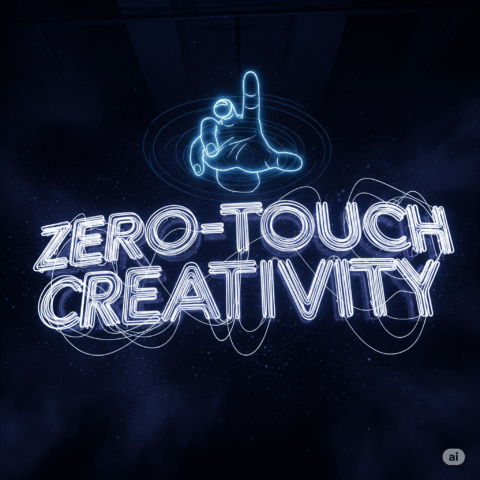The concept of zero-touch creativity is redefining content creation in 2025. Using advanced artificial intelligence, platforms are now capable of generating articles, videos, graphics, and marketing materials entirely without human prompts or manual input. This technology allows creators and businesses to automate ideation, production, and even publication—freeing up time for strategic decision-making rather than repetitive creative tasks.
With AI models trained on vast datasets and connected to real-time information, zero-touch systems can identify trending topics, assemble multimedia assets, and deploy content across channels with minimal oversight. Whether it’s a news article written before the story breaks or a social media post generated at the perfect engagement window, these tools are shifting the boundaries of what it means to create.
In this guide, we’ll explore how zero-touch creativity works, the AI platforms leading the charge, the industries benefiting most, and the challenges this automation presents for quality, ethics, and originality.
What Is Zero-Touch Creativity?
Zero-touch creativity refers to automated content generation where AI tools independently handle every stage of the creative process. This goes beyond traditional AI-assisted workflows—there’s no need for prompts, templates, or manual guidance.
Key characteristics include:
Autonomous Ideation – AI selects topics or themes based on data trends.
Automated Production – Text, audio, and video content is generated without human edits.
Self-Optimisation – AI adjusts content style and tone for target audiences automatically.
Multi-Channel Publishing – Content is distributed across platforms without manual scheduling.
How AI Generates Content Without Input
Zero-touch AI uses a combination of technologies:
| Technology | Function |
|---|---|
| Natural Language Generation | Produces human-like text based on learned patterns |
| Computer Vision | Creates and edits images or video content |
| Predictive Analytics | Anticipates topics or trends before they peak |
| Workflow Automation | Integrates with CMS and publishing tools |
| API Integrations | Pulls live data to keep content current |
Advantages for Businesses and Creators
1. Increased Output
Generate high volumes of content without increasing staff or hours.
2. Reduced Costs
Eliminate repetitive creative labour and lower outsourcing expenses.
3. Speed to Market
React instantly to trends and news without human delays.
4. Consistency
Maintain brand voice across multiple channels.
5. 24/7 Production
Content creation continues outside of traditional working hours.
Leading AI Tools in 2025
| Tool | Primary Capability | Zero-Touch Feature |
|---|---|---|
| AutoNarrate AI | Long-form article creation | Generates articles based on RSS feeds |
| VisionFlow | Video and image generation | Automated editing and cross-platform export |
| SocialPulse AI | Social media automation | Creates and posts trending content daily |
| MarketMuse Pro | SEO-optimised web content | Monitors SERPs and publishes updates |
| StreamGen | Livestream script and media automation | Produces show formats without host input |
News and Journalism
AI systems can draft breaking news stories within seconds of official data releases, such as economic reports from the Office for National Statistics.
Marketing
Automated campaigns adapt to user engagement metrics, tailoring messages in real time.
E-Commerce
Product descriptions, reviews, and personalised offers are generated without human copywriters.
Entertainment
Music, short films, and interactive media are produced and distributed automatically.
Education
Course content and lesson plans are updated instantly to reflect new regulations or discoveries.
Risks and Challenges
While zero-touch creativity offers efficiency, it also presents risks:
Quality Control – Fully automated content may lack nuance or factual accuracy.
Ethical Concerns – AI-generated material could infringe copyrights if datasets are not curated carefully.
Bias Propagation – AI can reinforce biases present in training data.
Over-Saturation – High-volume automation could flood markets with low-value content.
Ethical Considerations
Regulatory bodies, including the UK Government, are considering frameworks for AI-generated media. Creators must ensure:
Transparency – Disclose when content is AI-generated.
Data Compliance – Follow GDPR rules on personal data use.
Attribution – Respect intellectual property and provide citations where required.
Accountability – Maintain human oversight for sensitive or high-stakes content.
Action Plan for Implementing Zero-Touch AI
Define Objectives – Decide what content can be safely automated.
Select Trusted Tools – Choose platforms with compliance certifications.
Integrate Safeguards – Add human review for critical outputs.
Measure Performance – Track engagement, accuracy, and ROI.
Update Policies – Include AI use in brand and content guidelines.
For more insights into automation trends, see our technology section.
Frequently Asked Questions
1. What makes zero-touch creativity different from AI-assisted content creation?
Zero-touch systems handle every step without prompts or manual input, whereas AI-assisted workflows require human guidance.
2. Can zero-touch AI replace human creators entirely?
Not entirely. Human oversight remains crucial for originality, ethics, and quality.
3. Is AI-generated content legal in the UK?
Yes, but creators must comply with copyright, GDPR, and advertising regulations.
4. How accurate is zero-touch AI content?
Accuracy depends on data quality and system design. Many tools still require spot checks.
5. What industries benefit most from zero-touch creativity?
News media, marketing, e-commerce, and entertainment see the biggest gains.
Conclusion
Zero-touch creativity is transforming how businesses and individuals approach content generation. By leveraging AI tools capable of producing material without any human input, organisations can scale faster, cut costs, and maintain a consistent brand presence across multiple platforms.
However, automation doesn’t remove the need for responsibility. Human review, ethical safeguards, and strategic oversight are vital to ensure content remains accurate, compliant, and valuable to audiences.
To explore more about AI-driven content strategies and automation tools, visit NewsAsShop.co.uk for expert guides and the latest industry updates.


